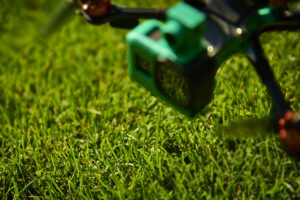The FAA’s final rule on operations over people is a mixed bag for operators. The stated goal of the FAA’s rule is to allow for “routine operations over people and routine operations at night under certain circumstances. The rule will eliminate the need for those operations to receive individual Part 107 waivers from the FAA.” The FAA splits operations into 4 categories with different limitations and requirements for each category.

Category 4 addresses drones that have airworthiness certificates issued under Part 21 of FAA regulations. We don’t anticipate most operators will utilize drones that have certificates issued though that may change as rules and standards in regard to durability and reliability are finalized. We’ll ignore this category as it’s highly specialized and unlikely to apply to most of us.
For the remaining categories 1-3, the common theme to all categories is that they can’t have any exposed rotating parts that would lacerate human skin. At first reading that seems to say that all propellers have to be shrouded, ducted, or covered. However, that’s not the case as the FAA “only prohibits the presence of rotating parts capable of lacerating human skin in typical human encounters.” The FAA notes that propeller guards and motor stop technology could be utilized as a method of compliance saying that waivers have already been approved using those methods.
For Category 1, the drone has to be less than 0.55 pounds, all up weight, and can’t have exposed rotating parts capable of lacerating human skin.
For Category 2 and 3 it gets confusing. Category 2 drones can’t cause injury that is “equivalent or greater than the severity of an injury caused by a transfer of 11 foot-pounds of kinetic energy upon impact from a rigid object.” Category 3 increases the number to 25 foot-pounds. Both can’t have exposed rotating parts, and both can’t contain any safety defects. Both also require a FAA accepted means of compliance (MOC) and FAA accepted declaration of compliance (DOC). Needless to say, most of us are going, “wut?”. Most of this will be handled by manufacturers unless you decide to create your own means of compliance. We’ll discuss this a little bit later. Drones will also be labeled with their appropriate categories if they’re in compliance. Yes, drones may have multiple categories, say for example, if characteristics change over a flight envelope.
Based on a number of comments on the RID NPRM, many in the industry feel the specifications for injury under Categories 2 & 3 are much too conservative for realistic compliance. At least at first. Time will tell if that gets changed.
Now where it gets interesting is the limitations of flight. For category 1 operations, you can’t have sustained flight over open-air assemblies unless you comply with remote ID. So, if you want to fly over open-air assemblies with your 107 registered drone, it better have remote ID. The FAA does define sustained flight and it means “hovering above the heads of persons gathered in an open-air assembly, flying back and forth over an open-air assembly, or circling above the assembly in such a way that the small unmanned aircraft remains above some part the assembly.” Sustained flight doesn’t include a brief, one-time transit over a portion of the assembly where the operation is unrelated to the assembly.
For Category 2 operations, like Category 1, drones can be flown over open-air assemblies if they are remote ID compliant and have the required MOC and DOC.
Category 3 gets more restrictive and drones can’t be flown over open-air assemblies and can only fly over people under either of two conditions. First, the operation is within or over a closed set/restricted-access site and all people are on notice that a drone may fly over them. Second, the drone does not maintain sustained flight over anyone unless that person is directly participating in the operation, or is reasonably protected by a structure or inside a stationary vehicle. The second condition is pretty much what the rules are now.
How about flights over vehicles? The new rules allow for flights over vehicles with limitations. For categories 1-3, sustained flight over vehicles are allowed only if the operation is over a closed set/restricted-access site, and everyone in the moving vehicles is on notice that a drone may be above them. If the operation is not within a closed set/restricted-access site, the drone may not have sustained flight over vehicles. What does this mean? You can transit over a road, but can’t linger. And what’s a vehicle? “[A]ny means of transportation, regardless of whether it is motorized.” This makes for some really weird outcomes. If you’re flying over a person with a category 1 drone, and this person suddenly hops onto a skateboard, you can’t sustain flight over them simply because they are now on a vehicle unless you’re in a closed set/restricted-access site and they’re on notice.
Now back to MOC and DOC. When the FAA says “means of compliance”, it means the method by which an applicant (usually a manufacturer) shows the FAA that the drone won’t exceed the applicable injury severity limit and does not contain exposed rotating parts that could cause lacerations. Once the FAA accepts the MOC, the applicant/manufacturer can rely on the MOC to declare compliance with the rule.
So, what does this mean to me? If your drone falls under category 1, you can fly over people as long as the drone meets all the eligibility requirements on the effective date of the rule. As for Categories 2 & 3, it looks like it will take a while as the FAA will need to review and approve both MOCs and DOCs. How about if you already have an ops over people waiver? The FAA will review the waivers on a case-by-case basis and determine next steps as appropriate. Likely, the FAA will follow the precedent set by the transition from 333 to 107 and phase the waivers out.
And the proverbial kitchen sink. The FAA also included a provision now that requires that people have their remote pilot certificate and ID in their possession when operating. They also added requirements that both must be presented on request from: “the Administrator; an authorized representative of the National Transportation Safety Board (NTSB); any Federal, State, or local law enforcement officer; and any authorized representative of the Transportation Safety Administration (TSA).”
As you can see, ops over people is easy for drones under 0.55 pounds but gets complicated quickly. Fortunately, the complicated mess will mostly be handled by manufacturers but also means that we likely won’t see Category 2 or 3 operations for a while. It’s also unfortunate the operations over vehicles is over-restrictive. All-in-all the operations over people rule is a good start.
A special thanks to KC Sealock for his FPV input, Taylor Albrecht with TNL Aviation and President of the Central Colorado UAS Club, and Desi Ekstein with Women and Drones. All invaluable input.
OOP and Night Op Summary: https://www.faa.gov/news/media/attachments/OOP_Executive_Summary.pdf
OOP Final Rule: https://www.faa.gov/news/media/attachments/OOP_Final%20Rule.pdf
A good in depth article in Inside Unmanned Systems: https://insideunmannedsystems.com/oops-there-it-is/



My question is, what if your at the maximum altitude of 400 AGL over vehicles or people? I guess we have to take it literally.
Happy New Year Tom. Can you explain this a bit further. I’m not sure exactly what you mean.